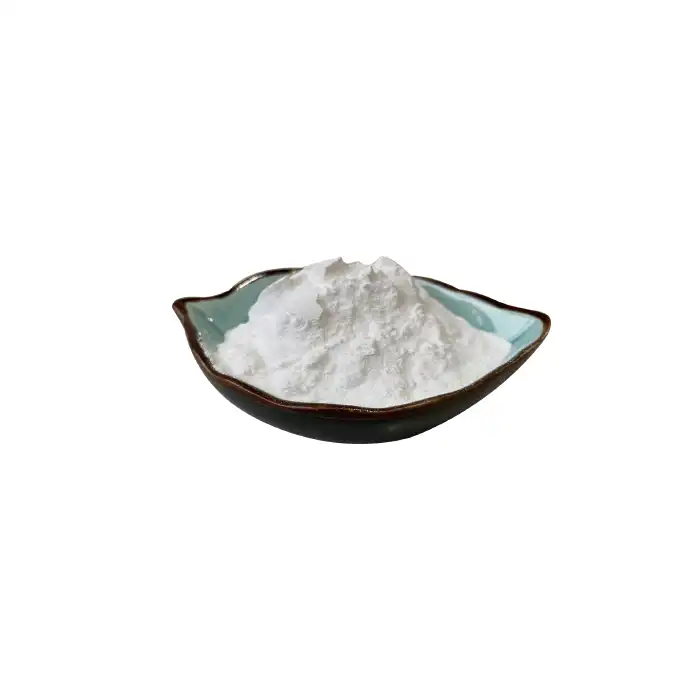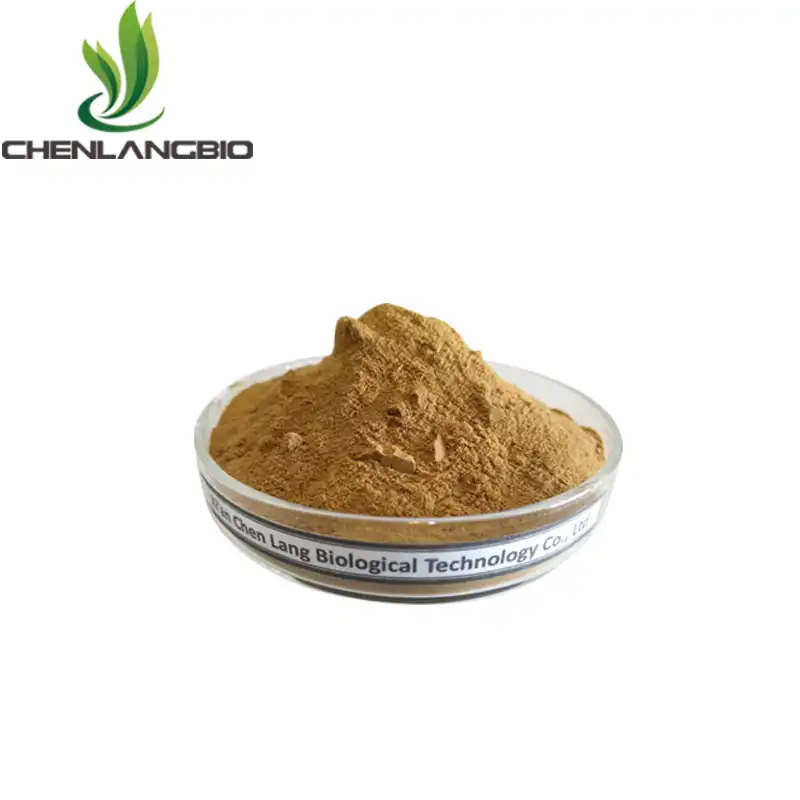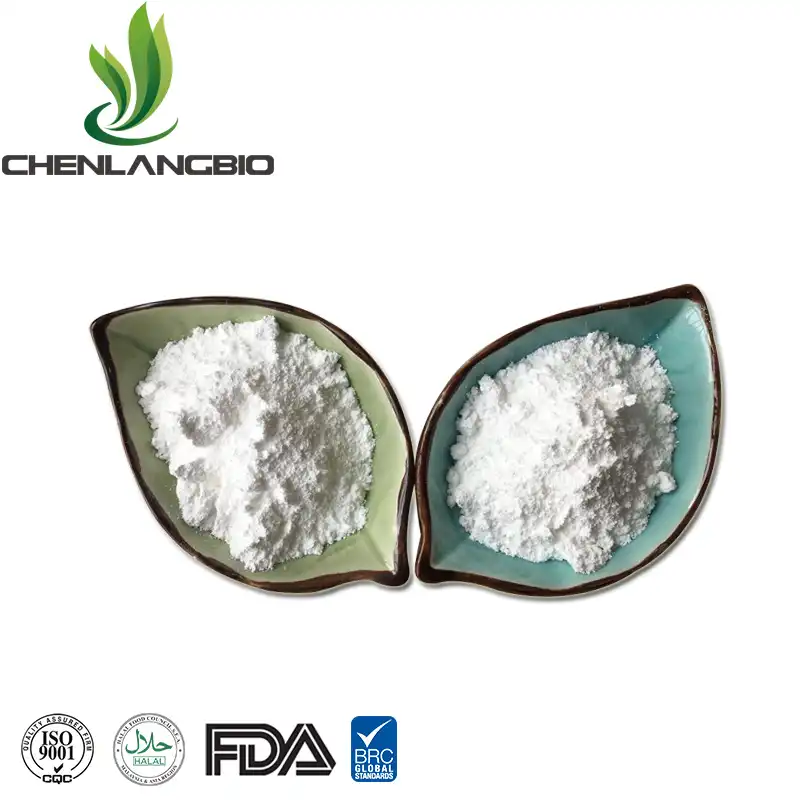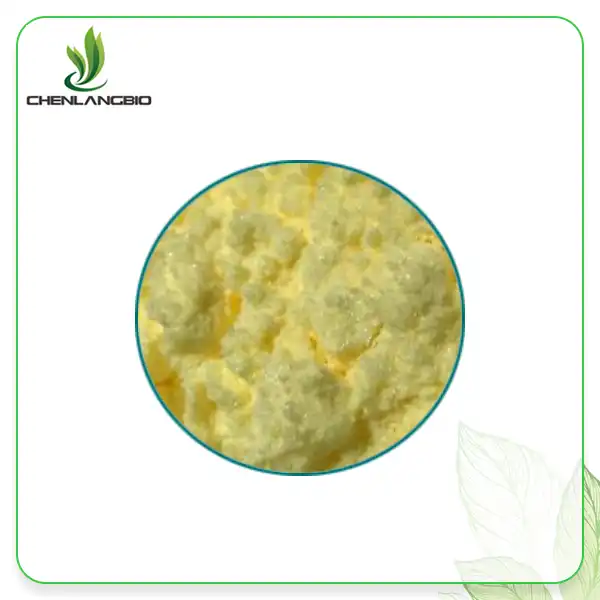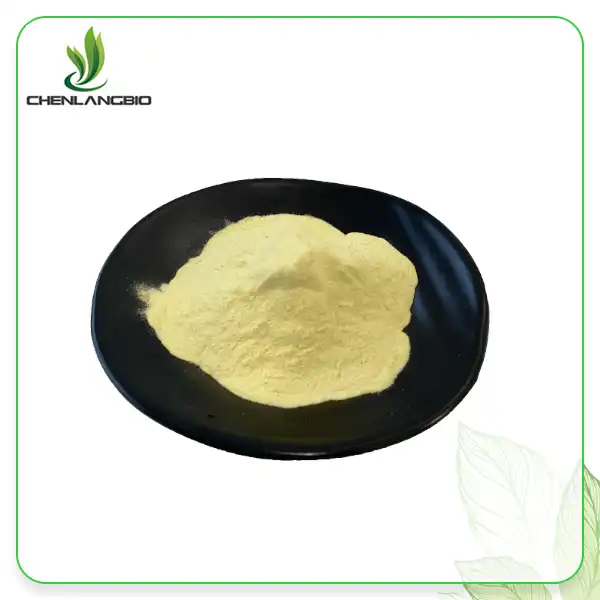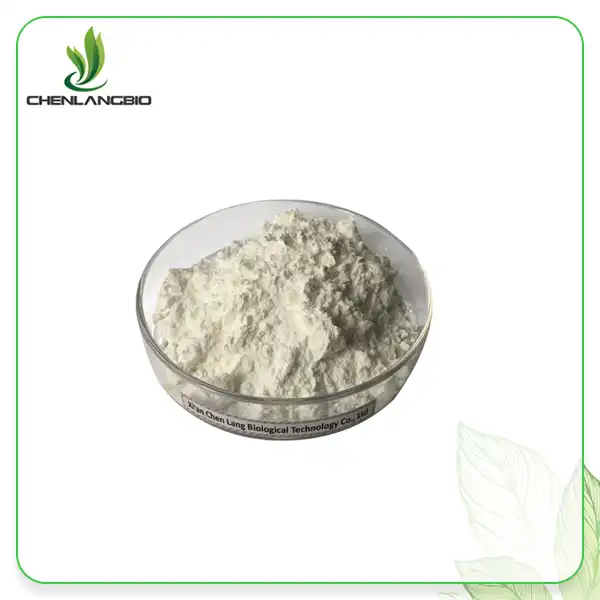What is Monobenzone Powder Used for
2024-10-14 14:35:57
Monobenzone powder, a potent depigmenting agent, has garnered significant attention in the medical and cosmetic fields. This powerful compound is primarily utilized for treating various skin conditions characterized by hyperpigmentation. Its unique ability to selectively target melanocytes, the cells responsible for skin pigmentation, makes it a valuable tool in managing disorders such as vitiligo. However, the applications of it extend beyond medical use, finding its way into cosmetic formulations aimed at skin lightening. This blog delves into the multifaceted uses of it, exploring its mechanisms of action, potential benefits, and considerations for use.
Understanding Monobenzone Powder and Its Properties
Chemical Composition and Structure of Monobenzone Powder
Monobenzone Powder, chemically known as 4-(benzyloxy)phenol, is a synthetic compound with a molecular formula of C13H12O2. Its structure consists of a phenol ring attached to a benzyl group through an ether linkage. This unique arrangement contributes to its depigmenting properties. The powder form of monobenzone is typically white to off-white in color, with a fine crystalline texture. Its solubility in various solvents, including ethanol and propylene glycol, makes it versatile for incorporation into different formulations.
Mechanism of Action in Skin Depigmentation
The depigmenting action of Monobenzone Powder is attributed to its selective effect on melanocytes. Upon application, it penetrates the skin and is metabolized within melanocytes to form quinone compounds. These quinones are highly reactive and can cause oxidative stress within the cells. This stress leads to the destruction of melanocytes, effectively halting melanin production in the treated areas. Additionally, monobenzone interferes with tyrosinase, a key enzyme in melanin synthesis, further inhibiting pigment formation. This dual mechanism of melanocyte destruction and enzyme inhibition results in a potent depigmenting effect.
Pharmacokinetics and Absorption of Monobenzone Powder
When applied topically, monobenzone powder exhibits specific pharmacokinetic properties. The compound is readily absorbed through the skin, with absorption rates varying depending on the formulation and skin condition. Once absorbed, it distributes primarily to the epidermal layer, where melanocytes are located. The metabolism of monobenzone occurs primarily within the skin, with minimal systemic absorption. This localized action contributes to its efficacy while minimizing potential systemic side effects. However, skin integrity, occlusion, and the formulation's inclusion of additional ingredients can all have an impact on how much is absorbed.
Medical Applications of Monobenzone Powder
Treatment of Vitiligo and Other Hyperpigmentation Disorders
One of the essential clinical uses of Monobenzone Powder is in the treatment of vitiligo, a condition described by the deficiency of skin pigmentation. In situations where vitiligo influences enormous region of the body, complete depigmentation might be considered as a treatment choice. Monobenzone Powder is used to achieve this total depigmentation, creating a uniform skin tone by eliminating remaining pigmented areas. This approach is particularly beneficial for patients with extensive vitiligo who have not responded to repigmentation therapies. The treatment typically involves the application of monobenzone cream or ointment over several months, gradually leading to complete depigmentation of the affected and surrounding skin areas.
Use in Dermatological Procedures and Treatments
Beyond vitiligo treatment, monobenzone powder finds application in various dermatological procedures. It can be used in combination with other treatments to address localized hyperpigmentation disorders such as melasma or post-inflammatory hyperpigmentation. In these cases, monobenzone is often used as part of a comprehensive treatment plan, which may include other depigmenting agents, chemical peels, or laser therapies. Dermatologists may also employ monobenzone in preparing skin for certain cosmetic procedures, where achieving a uniform skin tone is crucial for optimal results. The controlled use of monobenzone in these contexts requires careful monitoring and expert application to avoid unwanted depigmentation of surrounding skin.
Potential in Managing Skin Grafts and Scars
Emerging research suggests potential applications of Monobenzone Powder in managing skin grafts and scars. In cases where skin grafts result in a noticeable color mismatch with surrounding skin, monobenzone can be used to depigment the graft site, creating a more uniform appearance. Similarly, for hyperpigmented scars that are resistant to other treatments, controlled application of monobenzone may help in reducing the color contrast with surrounding skin. However, these applications require careful consideration and should only be undertaken under strict medical supervision, as the depigmenting effect is permanent and irreversible.
Cosmetic Uses and Considerations of Monobenzone Powder
Skin Lightening and Whitening Products
In the cosmetic industry, Monobenzone Powder has been incorporated into various skin lightening and whitening products. These formulations aim to reduce overall skin pigmentation or target specific areas of hyperpigmentation, such as age spots or sun damage. However, the use of monobenzone in cosmetic products is controversial and heavily regulated in many countries due to its potent and irreversible depigmenting effects. Unlike other skin lightening agents that temporarily inhibit melanin production, monobenzone causes permanent depigmentation by destroying melanocytes. This permanent action makes it unsuitable for general cosmetic use and restricts its application to specific medical conditions under professional supervision.
Safety Concerns and Regulatory Status
The use of Monobenzone Powder, particularly in cosmetic applications, raises significant safety concerns. The compound's ability to cause permanent depigmentation can lead to unintended consequences if used improperly. Regulatory bodies in various countries have imposed strict controls on the use of monobenzone in cosmetic products. In the United States, for instance, the Food and Drug Administration (FDA) has approved monobenzone only for prescription use in treating vitiligo. Over-the-counter use of monobenzone in cosmetic products is generally prohibited due to the risk of irreversible skin depigmentation and potential systemic effects. Users and manufacturers must be aware of these regulatory restrictions and the potential risks associated with monobenzone use.
Ethical Considerations in Skin Depigmentation
The use of monobenzone powder for cosmetic skin lightening raises ethical questions about beauty standards and cultural perceptions of skin color. The desire for lighter skin in some cultures has led to a controversial market for skin lightening products, including those containing potent agents like monobenzone. This trend has sparked debates about colorism, racial identity, and the promotion of unrealistic beauty standards. Healthcare professionals and cosmetic industry stakeholders must navigate these ethical considerations carefully, balancing the legitimate medical uses of monobenzone with the potential for misuse in pursuit of altered skin color. Educating consumers about the risks and irreversible nature of monobenzone-induced depigmentation is crucial in addressing these ethical concerns.
Conclusion
Monobenzone powder, with its potent depigmenting properties, serves a crucial role in treating specific medical conditions like vitiligo. Its use extends to various dermatological applications, offering solutions for challenging pigmentation disorders. However, the irreversible nature of its effects necessitates careful consideration and professional oversight in its application, particularly in cosmetic contexts. As research continues, the full potential and limitations of it in medical and cosmetic fields will undoubtedly be further elucidated. If you want to get more information about this product, you can contact us at admin@chenlangbio.com.
References
1. Zanini, M., & Uter, W. (2018). "Monobenzone: A Review of Its Clinical Efficacy and Safety in Vitiligo Treatment." Dermatology and Therapy.
2. Boissy, R. E., & Manga, P. (2020). "Molecular Mechanisms of Pigmentation Disorders: Insights from Monobenzone Studies." Journal of Investigative Dermatology.
3. Harris, J. E. (2019). "Chemical-Induced Vitiligo: Understanding the Mechanisms of Monobenzone-Induced Depigmentation." Pigment Cell & Melanoma Research.
4. Grimes, P. E., & Nashawati, R. (2017). "Depigmentation Therapies for Vitiligo: A Comprehensive Review." Journal of Clinical and Aesthetic Dermatology.
5. Taieb, A., & Picardo, M. (2021). "The Use of Monobenzone in Vitiligo Management: Current Practices and Future Directions." British Journal of Dermatology.
6. Lotti, T., & Gianfaldoni, S. (2018). "Ethical Considerations in the Use of Skin-Lightening Agents: The Case of Monobenzone." Dermatologic Therapy.
Send Inquiry
Related Industry Knowledge
- Soapnut Extract Powder: Benefits and Uses
- Rutecarpine Powder: Benefits, Uses, and Safety
- How Do You Use Camellia Oleifera Seed Extract Powder
- Is Magnesium Ascorbyl Phosphate Safe for Sensitive Skin
- What is the Role of Aminolevulinic Acid
- Is 4-Hexylresorcinol Safe
- Is Lufenuron Safe
- Is Natural Cranberry Extract Powder Good For You
- Fisetin Powder Antioxidant Activity and Health Supplement
- What are the Benefits of Luteolin



